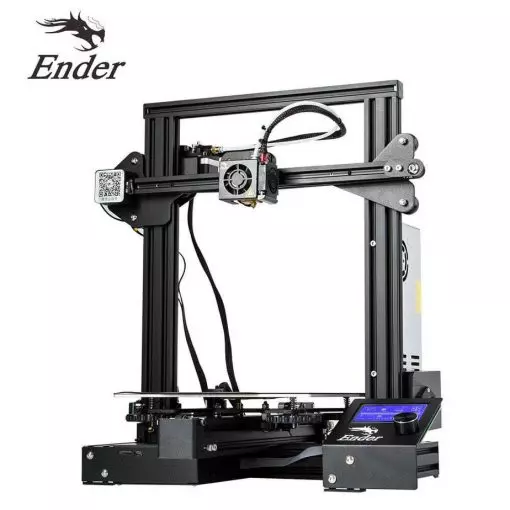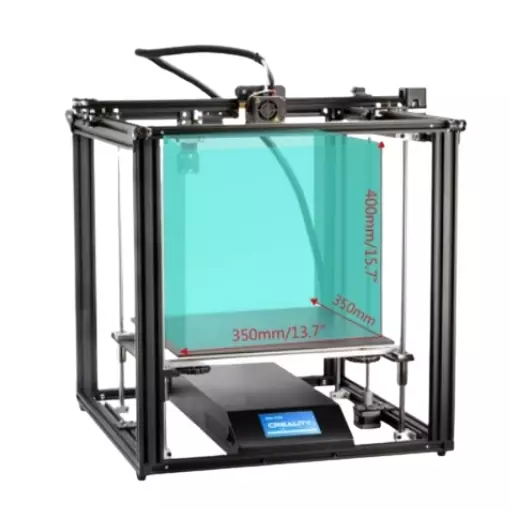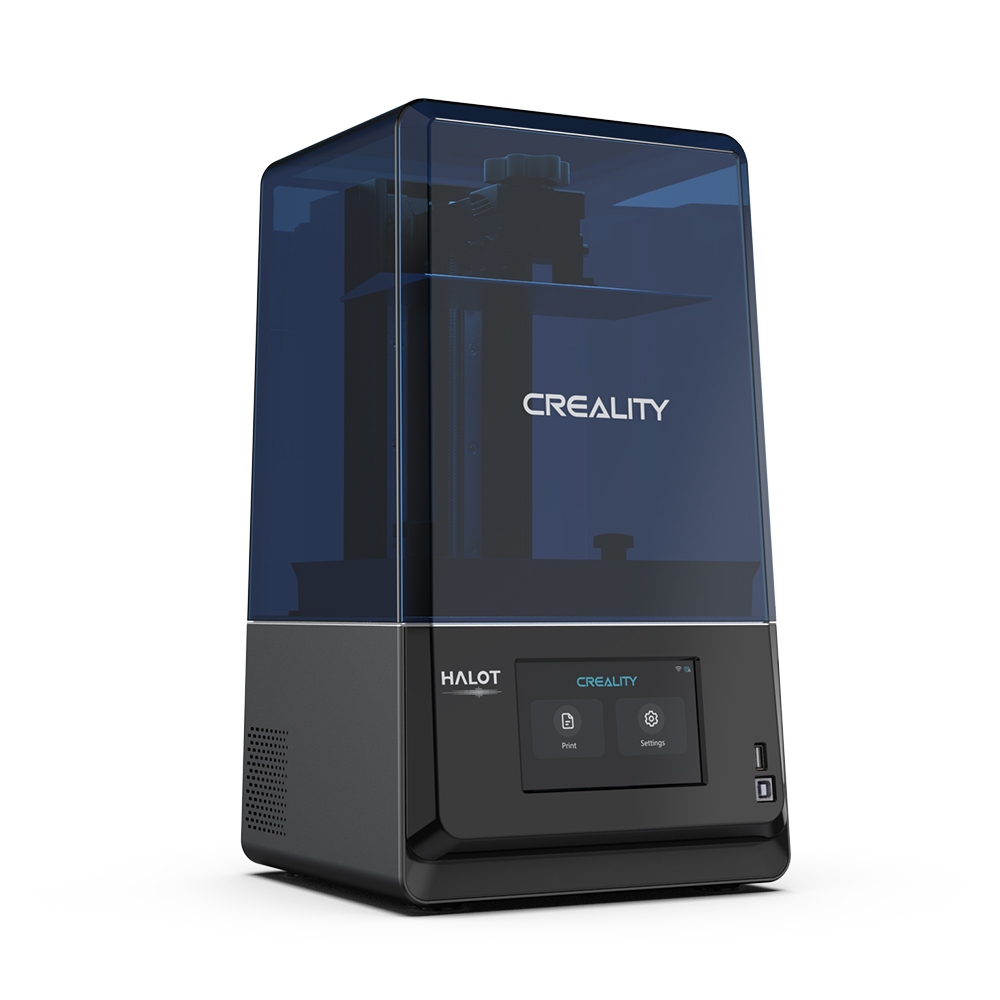Compare Ender 3 vs Ender 5 Plus vs Halot One Plus
Comparison between the best 3D printers
Choose the best 3D printer at the best price. The cheapest 3D printers are here.
Buy a 3D printer here with 3D Fila.
 |
 |
 |
|
| Model | Ender 3[BUY Ender 3] |
Ender 5 Plus[BUY Ender 5 Plus] |
Halot One Plus[BUY Halot One Plus] |
| Estimated price | $210,00 | $599,00 | $399,00 |
| Fabricante | Creality 3D | Creality 3D | Creality 3D |
| Release Year | 2018 | 2019 | 2022 |
| Print Volume [mm] | 220x220x250 | 350x350x400 | 102x172x160 |
| Printer Size [mm] | 440x440x465 | 632x619x666 | 236x245x416 |
| Weight [kg] | 6,62 | 18,2 | 6,8 |
| Power Loss Recovery | NO | YES | NO |
| Maximum Resolution [mm] | 0,1 | 0,1 | |
| Processor | 8 bits | 32 bits | |
| Display | Mono | Touchscreen TFT 4,3'' | |
| Power Supply | 24V / 270W | 24V / 504W | |
| Connectivity | SD / USB | SD / USB | USB / Wi-Fi |
| Operating systems | Windows, Mac, Linux | Windows, Mac, Linux | |
| Date of registration in the system | 2021-04-13 | 2021-04-14 | 2022-10-11 |
| Release date | 2018 | 2019 | 2022 |
| Extra features | The Ender 3 V1 is a DIY assembly 3D printer, a sales leader since 2017, standing out for its cost-benefit. With a wide printing capacity, it has a CNC machined structure for precision and stability. It offers high-precision prints with low noise, thanks to its innovative V-profile and pulleys. It has a self-adhesive magnetic platform for easy removal of models and excellent adhesion. The Ender 3 heats up quickly, reaching 100°C in 5 minutes, ideal for agile prints. It includes protection against power failures, allowing you to resume printing after interruptions, saving time and material. | The Ender 5 Plus offers a large print volume (350x350x400 mm) and fast assembly. It includes a BLTouch sensor, but with range limitations. It stands out for its dimensional accuracy, although it requires adjustments to the slicer settings. Despite the noise, its integrated design saves space, and includes features such as a filament sensor and power resumption. Ideal for large projects, it requires refinement in the settings for high-quality prints. | Crealitys Halot-One Plus printer stands out for its 4K+ resolution that delivers sharp details and consistent surfaces. It features a fast and responsive 5-inch LCD interface, as well as easy-to-use Halot Box software. It offers Wi-Fi connectivity and remote print monitoring, as well as an integrated air filtration unit, a rare feature in this price range. The Halot-One Plus is designed for the prosumer market, combining high quality with advanced features such as Wi-Fi and air filtration. During testing, it stood out for implementing these features at an affordable cost, while maintaining functionality. It features an attractive design with a UV-resistant blue cover and a robust dual rail system for the Z-axis, ensuring smooth and consistent movements. The large LCD and high resolution of the LCD mask (4320 x 2560) are other strong points, allowing for fine details and textures in prints. |
| Support for multiple colors and materials (AMS and CFS) | NO | NO | NO |
Notes * |
|||
| Cost-benefit | 6 / 10 | 6 / 10 | 8 / 10 |
| Hardware | 0.5 / 10 | 2 / 10 | 1.4 / 10 |
| Screen | . | . | . |
| Print volume | 3 / 10 | 4 / 10 | 3 / 10 |
| Performance | 1 / 10 | 1 / 10 | 9 / 10 |
| [BUY Ender 3] | [BUY Ender 5 Plus] | [BUY Halot One Plus] |
Conclusion |
| In comparing the Ender 3, Ender 5 Plus, and Halot One Plus 3D printers, several key factors emerge that influence the decision-making process for potential buyers. Firstly, from a cost perspective, the Ender 3 stands out as the most affordable option, making it an excellent choice for beginners or those on a budget. It offers a solid balance of performance, build quality, and print volume for its price point. With a high score in cost-benefit, it is ideal for hobbyists or individuals looking to explore 3D printing without a significant financial commitment. The Ender 5 Plus, while more expensive, provides a considerably larger print volume, making it suitable for larger projects. However, it may require some tuning and adjustments for optimal print quality. Its build quality and integrated features, such as power loss recovery and a filament sensor, enhance its usability for more experienced users who can take advantage of these capabilities. On the other hand, the Halot One Plus, also priced higher than the Ender 3, emphasizes advanced features and impressive resolution, catering to prosumers who prioritize detail and sophistication in their prints. Its unique attributes, such as Wi-Fi connectivity and an integrated air filtration system, add significant value, especially for those focused on high-quality detailed prints. However, it has a smaller print volume compared to the Ender 5 Plus. In summary, the choice ultimately hinges on individual priorities. For budget-conscious users and beginners, the Ender 3 offers the best cost-to-performance ratio. Those requiring larger build sizes may find the Ender 5 Plus to be a compelling option, despite its higher price. Meanwhile, for users seeking high-resolution printing with professional capabilities, the Halot One Plus presents a strong case, albeit at a premium. Each model serves distinct segments of the 3D printing market, ensuring that diverse needs and budgets are adequately addressed. |

